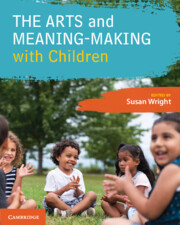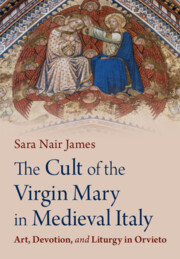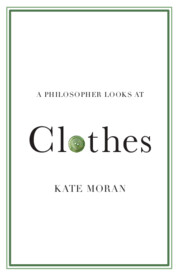Refine search
Actions for selected content:
373 results

The Arts and Meaning-Making with Children
-
- Published online:
- 11 September 2025
- Print publication:
- 25 September 2025
-
- Textbook
- Export citation
9 - Memetic Form and Memetic Meaning
-
- Book:
- The Language of Memes
- Published online:
- 12 September 2025
- Print publication:
- 11 September 2025, pp 151-170
-
- Chapter
- Export citation

AI and Image
- Critical Perspectives on the Application of Technology on Art and Cultural Heritage
-
- Published online:
- 10 September 2025
- Print publication:
- 30 September 2025
-
- Element
-
- You have access
- Open access
- HTML
- Export citation
Flow as Method: Artistic Restorying with the Sea
- Part of
-
- Journal:
- Public Humanities / Volume 1 / 2025
- Published online by Cambridge University Press:
- 08 September 2025, e130
-
- Article
-
- You have access
- Open access
- HTML
- Export citation
5 - Pioneers, Postmodernisms and Aesthetic Experience
- from Part II - Approaches to Rap
-
-
- Book:
- The Cambridge Companion to Global Rap
- Published online:
- 25 July 2025
- Print publication:
- 14 August 2025, pp 88-99
-
- Chapter
- Export citation
Towards an anti-colonial aesthetic politics: Surrealist praxis and epistemic refusal
-
- Journal:
- Review of International Studies , First View
- Published online by Cambridge University Press:
- 13 August 2025, pp. 1-22
-
- Article
-
- You have access
- Open access
- HTML
- Export citation
Chapter 19 - Avant-Gardist
- from Part III - Culture, Society, and Politics
-
-
- Book:
- María Irene Fornés In Context
- Published online:
- 27 August 2025
- Print publication:
- 07 August 2025, pp 205-215
-
- Chapter
- Export citation
Chapter 2 - Diego Rivera’s Antifascist Art
-
-
- Book:
- Antifascism(s) in Latin America and the Caribbean
- Published online:
- 21 July 2025
- Print publication:
- 07 August 2025, pp 41-71
-
- Chapter
- Export citation
Deleuze and the ontology of prehistoric rock art
-
- Journal:
- Archaeological Dialogues , First View
- Published online by Cambridge University Press:
- 01 August 2025, pp. 1-20
-
- Article
-
- You have access
- Open access
- HTML
- Export citation
Chapter 10 - Epilogue: Ethics, Aesthetics, and Poiesis
-
- Book:
- Healing and the Invention of Metaphor
- Published online:
- 17 July 2025
- Print publication:
- 31 July 2025, pp 261-283
-
- Chapter
- Export citation

The Cult of the Virgin Mary in Medieval Italy
- Art, Devotion, and Liturgy in Orvieto
-
- Published online:
- 24 July 2025
- Print publication:
- 24 July 2025
Introduction
-
- Book:
- Technologies of the Marvellous in Ancient Greek Religion
- Published online:
- 04 September 2025
- Print publication:
- 24 July 2025, pp 1-30
-
- Chapter
-
- You have access
- Open access
- HTML
- Export citation
Chapter 6 - The Image of Psychiatry and the Figure of the Psychiatrist in Literature
- from Part II - The Present and the Future
-
-
- Book:
- Values in Psychiatry
- Published online:
- 24 June 2025
- Print publication:
- 10 July 2025, pp 93-105
-
- Chapter
- Export citation
14 - The Holocaust and the Challenges of Representation
- from Part III - Culture and Ideas
-
-
- Book:
- The Cambridge History of the Holocaust
- Published online:
- 16 May 2025
- Print publication:
- 12 June 2025, pp 332-352
-
- Chapter
- Export citation
10 - Cultural Activity in the Holocaust
-
-
- Book:
- The Cambridge History of the Holocaust
- Published online:
- 16 May 2025
- Print publication:
- 12 June 2025, pp 163-184
-
- Chapter
- Export citation
22 - The Holocaust and the Visual Arts: Perplexity, Meanings
- from Part IV - Culture and Fields
-
-
- Book:
- The Cambridge History of the Holocaust
- Published online:
- 16 May 2025
- Print publication:
- 12 June 2025, pp 510-538
-
- Chapter
- Export citation
1 - Fashion, Function, and Fine Art
-
- Book:
- A Philosopher Looks at Clothes
- Published online:
- 08 May 2025
- Print publication:
- 05 June 2025, pp 1-25
-
- Chapter
- Export citation
The relief of El Cerrón: insights into central Iberian elite identity in the Late Iron Age
-
- Article
-
- You have access
- Open access
- HTML
- Export citation

A Philosopher Looks at Clothes
-
- Published online:
- 08 May 2025
- Print publication:
- 05 June 2025
Chapter 5 - Victorian Pepys
-
- Book:
- The Strange History of Samuel Pepys's Diary
- Published online:
- 24 April 2025
- Print publication:
- 24 April 2025, pp 84-107
-
- Chapter
- Export citation
